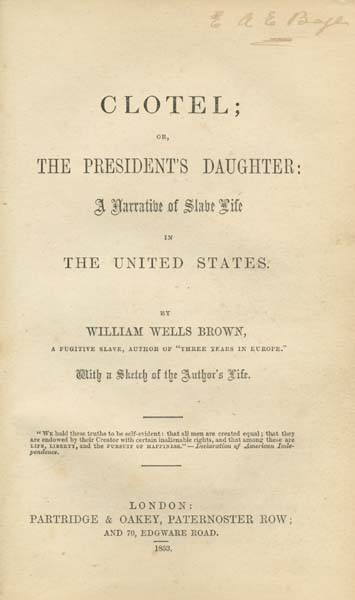Born Champions [Full Episode]Posted in Health/Medicine/Genetics, History, Interviews, Media Archive, Slavery, United States, Videos on 2014-10-02 01:45Z by Steven |
Finding Your Roots with Henry Louis Gates, Jr.
2014-09-30
Henry Louis Gates Jr., Host and Alphonse Fletcher University Professor and Director of the Hutchins Center for African and African American Research
Harvard University
Three of America’s greatest athletes, whose determination and love of sports were deeply shaped by their families, were all cut off from their true origins. Billie Jean King learns the story of her grandmother. Derek Jeter confronts his ancestors’ lives as slaves. Rebecca Lobo finds out that her Spanish ancestor fought side by side with a famous revolutionary.
Watch the full episode here.
Partial Transcript below:
GATES: I’M HENRY LOUIS GATES JR. WELCOME TO FINDING YOUR ROOTS.
TONIGHT, WE REVEAL THE ANCESTRY OF THREE OF AMERICA’S GREATEST ATHLETES: TENNIS LEGEND BILLIE JEAN KING, YANKEES ALL-STAR DEREK JETER, AND WOMEN’S BASKETBALL PIONEER REBECCA LOBO… ATHLETES WHOSE PURPOSE AND DRIVE WERE PROFOUNDLY SHAPED BY THEIR FAMILIES.
TO DISCOVER THEIR ANCESTORS, WE’VE USED EVERY TOOL AVAILABLE…
GENEALOGISTS HELPED STITCH TOGETHER THE PAST USING THE PAPER TRAIL THEIR FAMILIES LEFT BEHIND, WHILE GENETICISTS UTILIZED THE LATEST ADVANCES IN DNA ANALYSIS TO REVEAL SECRETS HUNDREDS OF YEARS OLD.
GATES: The answers are in this book…
GATES VO: AND WE’VE COMPILED EVERYTHING INTO A BOOK OF LIFE, A RECORD OF ALL OF OUR DISCOVERIES…
LOBO: I mean it’s just amazing to see her handwriting!
JETER: That’s unbelievable… all the way back to 1605!
BILLIE JEAN KING: This is from a bible? Family…we have a family bible?
GATES: Mhm.
BILLIE JEAN KING: This (audio cuts off 1:01:04:12) is fantastic!
GATES: AS WE TRACE BILLIE JEAN, DEREK, AND REBECCA’S ROOTS, WE’LL EXPLORE HOW THEY BECAME CHAMPIONS, DID THEY COME TO GREATNESS THROUGH HARD WORK AND INDIVIDUAL EFFORT? IS THEIR TALENT SIMPLY ENCODED IN THEIR GENES? COULD IT BE, THESE THREE ATHLETES WERE MODELED IN WAYS THEY NEVER COULD HAVE IMAGINED? BY THE LIVES OF THEIR ANCESTORS.
ROOTS TITLE SEQUENCE…
…GATES VO: DEREK’S FATHER, CHARLES JETER, IS AFRICAN-AMERICAN AND HIS MOTHER, DOROTHY CONNORS, IS OF IRISH DESCENT. IT WASN’T EASY BEING THE CHILD OF A MIXED MARRIAGE. WHEN DEREK WAS YOUNG, HE OFTEN HAD TO FACE UNWANTED ATTENTION.
JETER: You know back in the day, yeah you’d get some second glances, people trying to figure out what the dynamic is there. And if you go somewhere with both of them, obviously you get some stares.
GATES: Mhm.
JETER: My parents tried to explain to us that it’s just people’s ignorance they’re not used to seeing it.
GATES: Did your parents take any flack?
JETER: I think when you’re a young child, I think your parents don’t necessarily tell you how difficult it was…
GATES: Yeah.
JETER: …on them. So, you know, a lot of their troubles that they went through, I’m sure they sheltered us from it.
GATES: So when people come up to you and say, you know, “What are you?” what do you say?
JETER: Black and Irish…
GATES: Black and Irish, that’s what you say?
JETER: Yeah, that’s, that’s what I believe I am but I don’t know much about my history…




